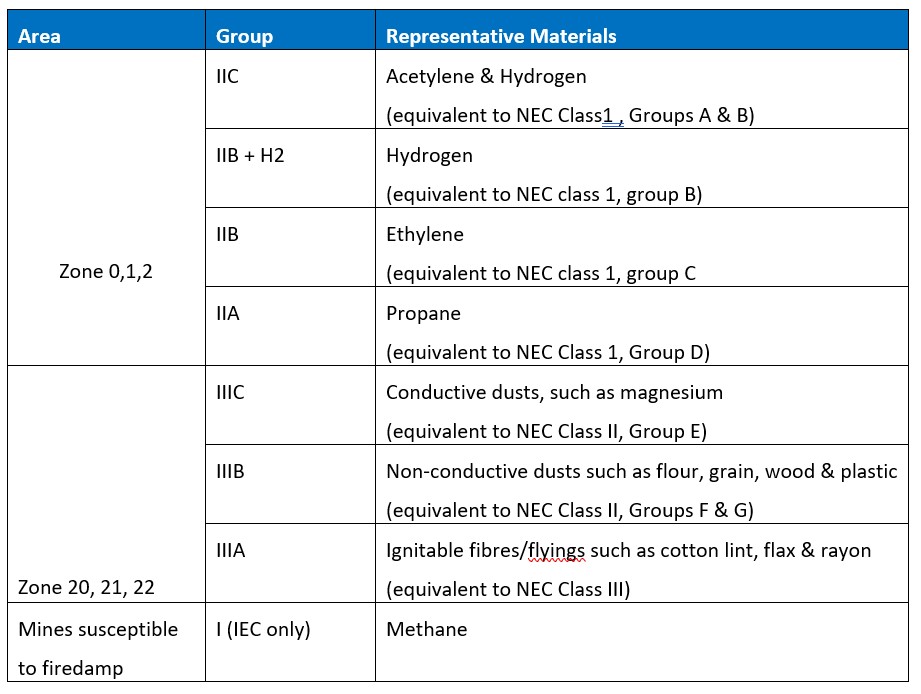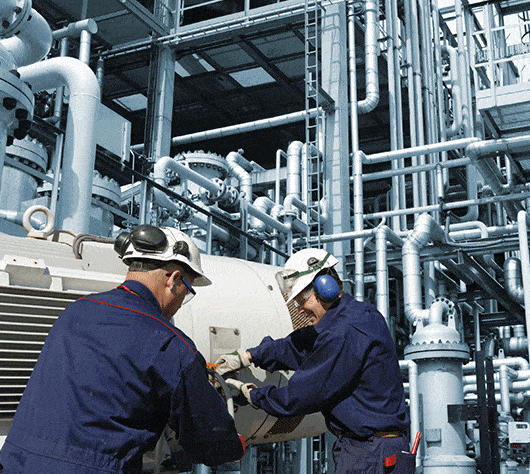Some Known Details About Roar Solutions
Some Known Details About Roar Solutions
Blog Article
The Definitive Guide for Roar Solutions
Table of ContentsThe Single Strategy To Use For Roar SolutionsIndicators on Roar Solutions You Should KnowUnknown Facts About Roar Solutions
In order to shield setups from a possible explosion a method of evaluating and identifying a potentially unsafe location is called for. The purpose of this is to make sure the right option and installation of devices to inevitably avoid an explosion and to ensure security of life.
(https://www.pearltrees.com/roarsolutions#item694973743)
No tools should be mounted where the surface area temperature level of the devices is higher than the ignition temperature level of the provided hazard. Below are some typical dust harmful and their minimal ignition temperature level. Coal Dust 380C 225C Polythene 420C (melts) Methyl Cellulose 420C 320C Starch 460C 435C Flour 490C 340C Sugar 490C 460C Grain Dirt 510C 300C Phenolic Material 530C > 450C Aluminium 590C > 450C PVC 700C > 450C Residue 810C 570C The probability of the danger being present in a concentration high enough to create an ignition will certainly vary from place to area.
In order to classify this threat a setup is divided into areas of danger relying on the amount of time the harmful exists. These locations are described as Areas. For gases and vapours and dusts and fibers there are 3 areas. Zone 0 Area 20 An unsafe ambience is extremely likely to be present and might be existing for extended periods of time (> 1000 hours annually) or even continuously Area 1 Area 21 A dangerous ambience is possible yet not likely to be existing for extended periods of time (> 10 450 C [842 F] A classification of T6 indicates the minimum ignition temperature is > 85 C [185 F] Harmful location electrical equipment possibly made for usage in greater ambient temperatures. This would showed on the ranking plate e.g. EExe II C T3 Ta + 60C( This means at 60C ambient T3 will certainly not be exceeded) T1 T1, T2, T3, T4, T5, T6 T2 T2, T3, T4, T5, T6 T3 T3, T4, T5, T6 T4 T4, T5, T6 T5 T5, T6 T6 T6 A T Course ranking of T1 implies the maximum surface area temperature level produced by the tool at 40 C is 450 C. Assuming the associated T Course and Temperature level ranking for the devices are ideal for the location, you can always utilize a tool with a more strict Division rating than required for the area. There isn't a clear solution to this inquiry. It really does depend on the kind of equipment and what repair work require to be accomplished. Tools with certain examination treatments that can not be performed in the area in order to achieve/maintain 3rd event ranking. Have to come back to the manufacturing facility if it is before the devices's service. Field Repair Work By Authorised Employee: Challenging screening may not be needed however certain treatments might need to be followed in order for the devices to maintain its 3rd party score. Authorized personnel must be employed to perform the job properly Fixing have to be a like for like replacement. New component need to be considered as a straight substitute requiring no unique screening of the equipment after the repair is full. Each piece of tools with a dangerous score ought to be examined separately. These are laid out at a high level below, but also for even more thorough info, please refer straight to the guidelines.
The Buzz on Roar Solutions
The equipment register is a comprehensive data source of tools documents that consists of a minimum set of areas to determine each product's location, technical criteria, Ex category, age, and environmental data. This details is important for tracking and managing the equipment efficiently within harmful areas. In comparison, for periodic or RBI sampling inspections, the quality will certainly be a combination of Comprehensive and Close inspections. The proportion of Thorough to Close examinations will be determined by the Devices Danger, which is assessed based upon ignition risk (the chance of a resource of ignition versus the chance of a combustible atmosphere )and the hazardous location classification
( Area 0, 1, or 2). This variation will likewise affect the resourcing requirements for work preparation. When Great deals are specified, you can establish sampling strategies based on the example dimension of each Lot, which describes the variety of random devices items to be examined. To determine the called for sample size, 2 facets need to be assessed: the dimension of the Lot and the classification of assessment, which suggests the level of effort that ought to be used( reduced, regular, or raised )to the evaluation of the Great deal. By combining the group of evaluation with the Great deal dimension, you can after that establish the ideal being rejected requirements for an example, meaning the allowed variety of malfunctioning products located within that example. For more information on this process, please refer to the Energy Institute Guidelines. The IEC 60079 common recommends that the maximum period between examinations should not go beyond three years. EEHA assessments will certainly also be carried out outside of RBI campaigns as part of set up maintenance and tools overhauls or repairs. These evaluations can be attributed towards the RBI example dimensions within the affected Lots. EEHA examinations are carried out to identify mistakes in electrical equipment. A weighted racking up system is view it now vital, as a solitary tool may have several mistakes, each with differing levels of ignition risk. If the consolidated rating of both assessments is much less than two times the fault score, the Whole lot is regarded appropriate. If the Whole lot is still thought about inappropriate, it must undertake a full examination or validation, which might set off more stringent examination methods. Accepted Whole lot: The causes of any kind of faults are determined. If an usual failure setting is discovered, extra devices might require maintenance. Mistakes are classified by extent( Safety, Honesty, House cleaning ), making sure that urgent concerns are analyzed and dealt with quickly to mitigate any influence on safety or operations. The EEHA data source must track and tape the lifecycle of faults along with the restorative activities taken. Carrying out a durable Risk-Based Assessment( RBI )strategy is critical for making certain conformity and security in taking care of Electrical Tools in Hazardous Locations( EEHA) (eeha). Automated Mistake Rating and Lifecycle Monitoring: Easily take care of faults and track their lifecycle to enhance evaluation accuracy. The introduction of this support for risk-based evaluation even more reinforces Inspectivity's placement as a best-in-class remedy for governing compliance, in addition to for any type of asset-centric evaluation usage instance. If you want discovering more, we welcome you to ask for a presentation and find how our service can transform your EEHA management procedures.
Some Known Facts About Roar Solutions.

In terms of eruptive threat, an unsafe location is an atmosphere in which an explosive ambience is present (or may be expected to be existing) in quantities that call for special safety measures for the building, installment and use of tools. electrical refresher course. In this write-up we discover the obstacles encountered in the office, the risk control procedures, and the called for competencies to function safely
These compounds can, in particular conditions, form eruptive ambiences and these can have major and unfortunate repercussions. Most of us are acquainted with the fire triangle remove any one of the three aspects and the fire can not happen, but what does this mean in the context of hazardous locations?
In a lot of circumstances, we can do little concerning the levels of oxygen airborne, yet we can have significant influence on resources of ignition, as an example electric tools. Hazardous areas are documented on the hazardous area classification illustration and are identified on-site by the triangular "EX" indication. Here, amongst other key information, zones are split into three types relying on the threat, the chance and period that an eruptive environment will exist; Zone 0 or 20 is considered the most unsafe and Area 2 or 22 is considered the least.
Report this page